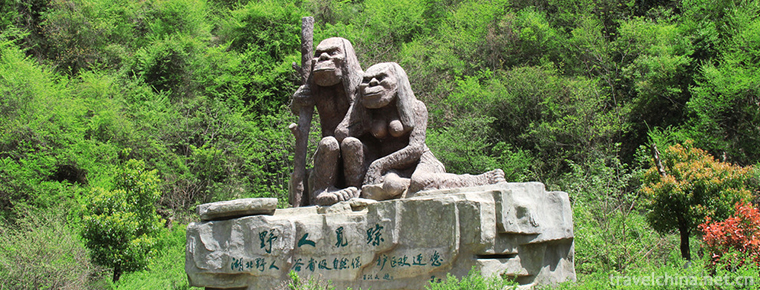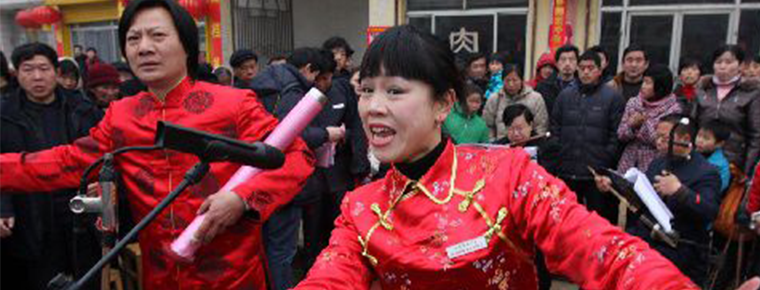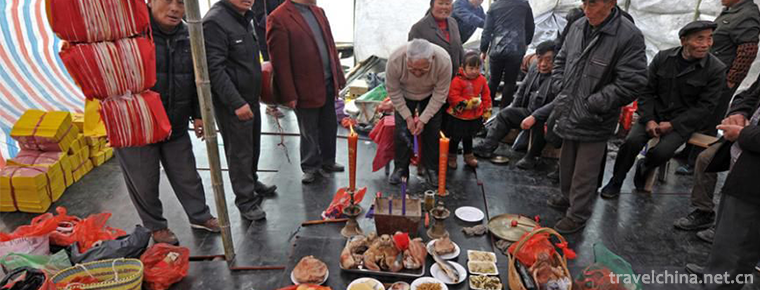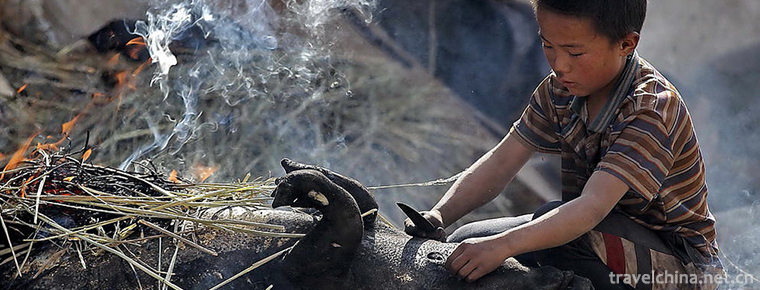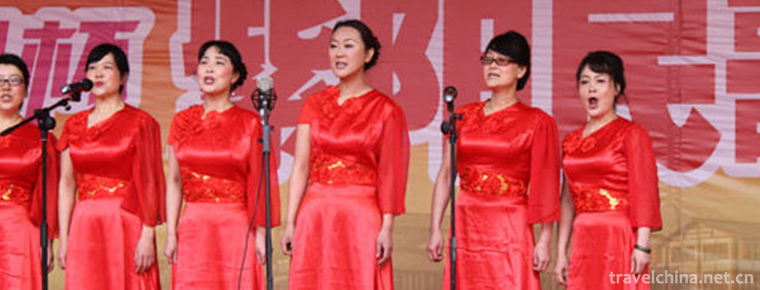Construction Techniques of Yanmen Folk House
Construction Techniques of Yanmen Folk House
Yanmen folk house construction technology is a traditional skill with local characteristics in Xinzhou, Shanxi Province. It was listed in the third batch of intangible cultural heritage list in 2011. Daixian County has a long history and culture. Among them, Yanmen Ancient Architecture is a typical folk wooden structure building with local characteristics and local culture. With the passage of time and social progress, this ancient architectural technology is still flourishing.
On May 23, 2011, Yanmen residential construction technology was approved by the State Council and listed in the third batch of national intangible cultural heritage list.
Technical features
People living in the border cities and counties can always live a wonderful life, such as Daixian folk houses. They build their houses like temples and walk into a folk house at will. They have a lot of beams and paintings, brick carvings, stone carvings and wood carvings. These can be regarded as artistic things, but they are common here.
Especially, the main body of Daixian dwellings is wooden structure, in which the wooden technology is the main body of ancient Chinese architecture. In the history of world architecture, it has a long history, unique system, rich and continuous architectural heritage, which intuitively shows the vitality of traditional wooden technology. Yang's woodworking skills of Yanmen in Daixian County, Shanxi Province, are distributed in Yanmenguan and its surrounding areas, a famous historical and cultural city in China. They are traditional woodworking techniques with rich local characteristics.
historical origin
The history of Yanmen woodworking in Daixian can be traced back to the Han Dynasty. The local people introduced to the reporter of China Union Business Daily that "Daixian wooden craftsmanship concentrated in the important areas where the culture of Central Plains and minority nationalities merged and exchanged in history. Yang's carpenter was the representative of the wooden construction craftsmanship of the Northern Jin Dynasty. His ancestor was the military carpenter who guarded Sanguan in the Southern Song Dynasty and specially made weapons." The woodworking skills of Zhaibao, Chengmen and Guanlou are handed down from generation to generation. In Daixian County, Yang's carpenters used abundant timber resources to build civil structure houses and temples. Although they had experienced more than 500 years of wind and rain erosion and geological disasters, their big wooden frames remained intact, showing their exquisite workmanship.
Daixian County has a long history and culture. Among them, Yanmen Ancient Architecture is a typical folk wooden structure building with local characteristics and local culture. With the passage of time and social progress, this ancient architectural technology is still flourishing. Yang Guiting, the representative of the inheritance of Yang's woodworking and construction skills, told China Joint Business Daily that "in June 2011, Yanmen Yang's woodworking skills were just renamed by the State Council as"Yanmen folk house building skills", and were published in the national intangible cultural heritage protection list. At present, the mastery of architectural skills includes the only fans and strands twist angle-picking technology and technology, the traditional multi-storey building beam-frame structure lifting material installation technology and technology, traditional building color painting and statue technology and technology, etc. These skills not only reflect the traditional building practical, material-saving, beautiful characteristics, but also in ancient buildings. Maintenance, reconstruction, demolition, decoration and other aspects play an important role.
"Yang's woodworking skills mainly belong to folk family inheritance skills, using traditional tools to repair ancient buildings, and using traditional techniques to construct ancient buildings intact. Yang's woodworking traditional craft has both inheritance and innovation. At present, this point has been reflected in the aspects of shape design, tools, sculpture and painting. Yang Guiting said.
Technical value
Daixian is an ancient historical and cultural city. Many cultural relics and monuments in Daixian have the value of researching historical development and architectural art. The ancient buildings left to this day, especially a large number of Ming and Qing buildings, constitute a huge workload of maintenance. These buildings have extremely important historical value, cultural relics value and artistic value, and are developing. Under the background of tourism, as a tourism resource, it also has very important economic value.
Whether it is from the perspective of ancient building repair or historical relics protection, it is inseparable from traditional technology. How long do historical buildings and cultural relics exist? How long do we need to accompany the work of ancient building maintenance and ancient building repair, and how long will the ancient building technology be prolonged accordingly? If the traditional vernacular architecture is replaced by modern new vernacular architecture and will eventually get rid of the traditional craftsmanship, then the traditional craftsmanship technology which is indispensable for the renovation and reconstruction of ancient buildings is endless. In this sense, ancient construction technology has its unique sustainability and continuity, as well as its lasting fresh activity and practicability. It has not only gradually formed an industry, but also formed a discipline.
Inheritance Significance
Yang Mei-en, son of Yang Guiting, a successor, told our reporter that "the market prospect of Yanmen folk house construction technology is very promising, including the Beijing Palace Museum and other ancient construction and maintenance projects are active in the woodworking technology successors of Daixian County. In order to better develop this skill, a representative construction team composed of descendants of woodworking families inherited for generations, namely Shanxi Yang's Ancient Building Engineering Co., Ltd., was established. At present, in the ancient architectural projects involved, from Inner Mongolia Plateau to the coast of the East China Sea, there are many provinces and cities. The World Expo Garden in Shenyang, the Luzu Temple in Baotou, the Wangjia compound in Shanxi Province and the development of Yuci Old Town have all been completed. "Yanmen Residence Building Skills" has already gone out of Yanmen Pass and headed for the whole country.
Yanmen Yang's woodworking skills mainly depend on the inheritance of father and son, teachers and apprentices. The inheritance method is mainly oral and heart-to-heart teaching. It constantly absorbs the elite talents of ancient architecture, and employs folk elite woodworking and masonry to enrich and inherit the skills.
The government and cultural departments of Daixian County Party Committee attach great importance to this national intangible cultural heritage protection, and have formulated a five-year development plan, which requires a comprehensive survey and understanding of the special technology and value of Yang's ancient architectural works, as well as the collation of traditional crafts, materials and the establishment of archives, and the publication of relevant anthologies. Picture album materials to promote social sharing; the establishment of a private old-fashioned carpenter shop with renovation as the main content, and create a brand; the implementation of investment attraction, protection of Yang's ancient construction technology.
The exquisite sculpture technology, the strain technology of material construction and material moulding, and the innovative thinking of absorbing many advantages and pushing out the old, provide the possibility for inheriting and developing the "Yanmen folk house building skills" and continuing to raise the traditional crafts to a new level. At the same time, it also lays a solid foundation for further entering the market.
Repair Technology
Yanmen folk house construction technology mainly distributes in Yanmenguan and its surrounding areas in Daixian County of our province. It is a folk traditional wood structure construction technology with rich local characteristics. It mainly includes: fanbone twist angle picking technology and technology, traditional multi-storey building girder structure lifting material installation technology and technology, traditional building color painting and sculpture technology. And process.
The technology of "stealth repair" is often used in the renovation of multi-storey traditional wooden structures. It means that any wooden component such as column, purlin and beam can be replaced without moving the large wooden frame, while the whole wooden frame is safe and sound. In today's era, construction techniques are mainly used for the maintenance and repair of ancient buildings. In a huge project, tens of thousands of different components must be organically combined to form the backbone of a building, and these components must be made accurately and correctly in advance. It can be divided into earthwork, stone work, big wood work, brick work, tile work, small wood work and painted paintings, among which there are many kinds of components such as columns, beams, fangs, purlins, boards, rafters, watchboards, bucket arches, doors and windows. The functions and shapes of various kinds of components vary greatly depending on the location of the building. The wooden components in multi-storey wooden structures are particularly complex and diverse. The shapes, sizes and combination modes of tenons and mortises are also quite different, depending on the combination of tenons and mortises.
The process of inheritance of craftsmanship also represents a kind of production and life style of "artisan family". In the family inheritance, there are not only the main ways of father-son inheritance, but also the rare cases of grandfather-grandson inheritance and sibling inheritance within the family. In addition, the inheritance of Yang's ancient architectural techniques is not conservative, but also inherits the foreign surnames. In the process of building collective skills, peer teachers are usually the leaders of the corresponding construction content, and the disciples under the leaders complete the related work. In recent years, Yang's woodworking technology has played a key role in the maintenance and reconstruction of the Bianjing Tower, Yanmen Guanlou, Daizhou Confucian Temple, Yingxian Muta and other key national cultural relics protection units. Yang Guiting, the successor of the thirty-ninth generation of Yang's carpenter, presided over the overhaul of Bianjing Building and the basic renovation of Yingxian wooden pagoda, Shanxi Wangjia Courtyard and Ashu Wang Pagoda.


Construction Techniques of Yanmen Folk House
-
Shennongjia Forestry DistrictHubei Shennongjia
Shennongjia Forest District, referred to as Shennongjia for short, was established in 1970 with the approval of the State Council and directly under the jurisdiction of Hubei Province.
Views: 252 Time 2018-10-28 -
The Siberian Tiger Park
Located on the North Bank of Songhua River, the Northeast Tiger Forest Park covers an area of 1.44 million square meters and is adjacent to the Sun Island Scenic Area. Among them
Views: 204 Time 2018-12-19 -
Shibing Karst
Karst is karst. It is the general name of the geological function of water in dissolving rock (carbonate rock, gypsum, rock salt, etc.) mainly by chemical dissolution
Views: 244 Time 2019-02-08 -
Hu Ji Shu Hui
Hu Jishu Fair is a traditional folk art fair that rose and took root in Huji Town, Huimin County, Shandong Province. Huji is the largest market town in the southeast of Huimin County
Views: 120 Time 2019-05-03 -
Andai Dance of Mongolian Nationality
Andai Dance originated from the Kulun Banner. According to textual research, Andai Dance was formed in the late Ming and early Qing Dynasty. At that time, the Kulun system was "the unity of polit
Views: 165 Time 2019-06-03 -
Netboat Club
Netboat Club is an ancient traditional folk custom and folk religious and cultural activities. During the period of the Republic of China, around the Qingming Festival and the Mid-Autumn Festival, ten
Views: 429 Time 2019-06-26 -
Year of the Yi Nationality
In the year of the Yi people, the Yi language is called "Kusi", "Ku" is the year of the Yi people and "Si" is the new year. It means "New Year". It is a traditi
Views: 224 Time 2019-07-12 -
Ziyang Folk Songs
Ziyang Folk Song is the general name of traditional folk songs spread in Ziyang County, Shaanxi Province, and it is the most representative of traditional folk songs in southern Shaanxi Province. It h
Views: 378 Time 2019-08-16 -
Seven Star Mountain tower
The Seven Star Mountain tower, commonly known as the black tower, was built in the Jiajing period of the Ming Dynasty (1522-1566). It is the brother tower of Dongshan white tower. It is on a peak of Qixing mountain in Taba village, Nanguang Town
Views: 386 Time 2020-10-16 -
Deyang medical and health
By the end of 2018, Deyang City had 2819 health institutions (including village clinics), including 7 centers for Disease Control and prevention, 7 health supervision institutions, 1 Emergency Center (station), 6 maternal and child health centers,
Views: 338 Time 2020-12-14 -
Yibin social security
By the end of 2019, there were 1.0302 million people participating in the basic endowment insurance for urban employees, an increase of 25500 over the end of the previous year, and 1.921 million people participated in the basic endowment insu
Views: 373 Time 2020-12-18

